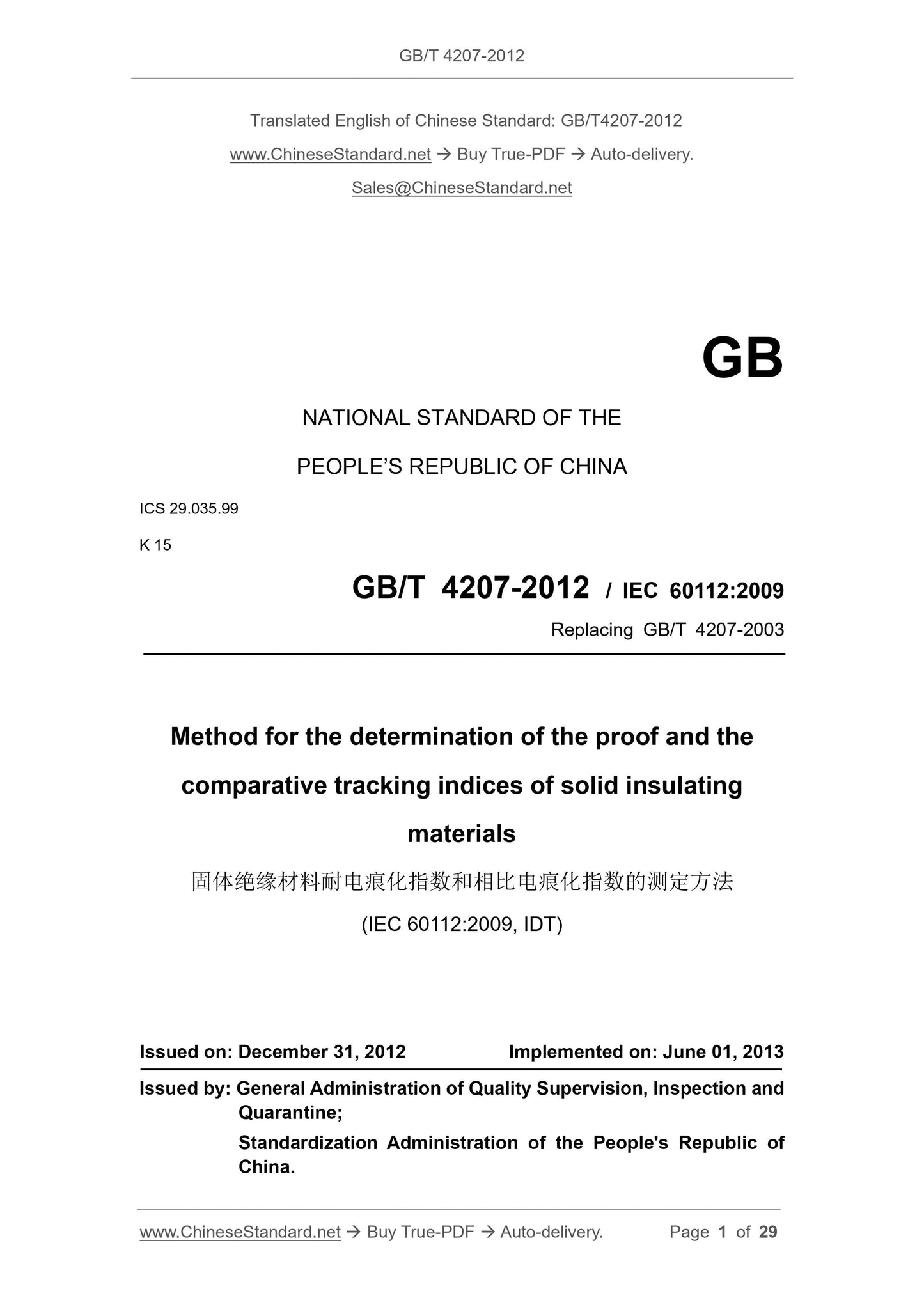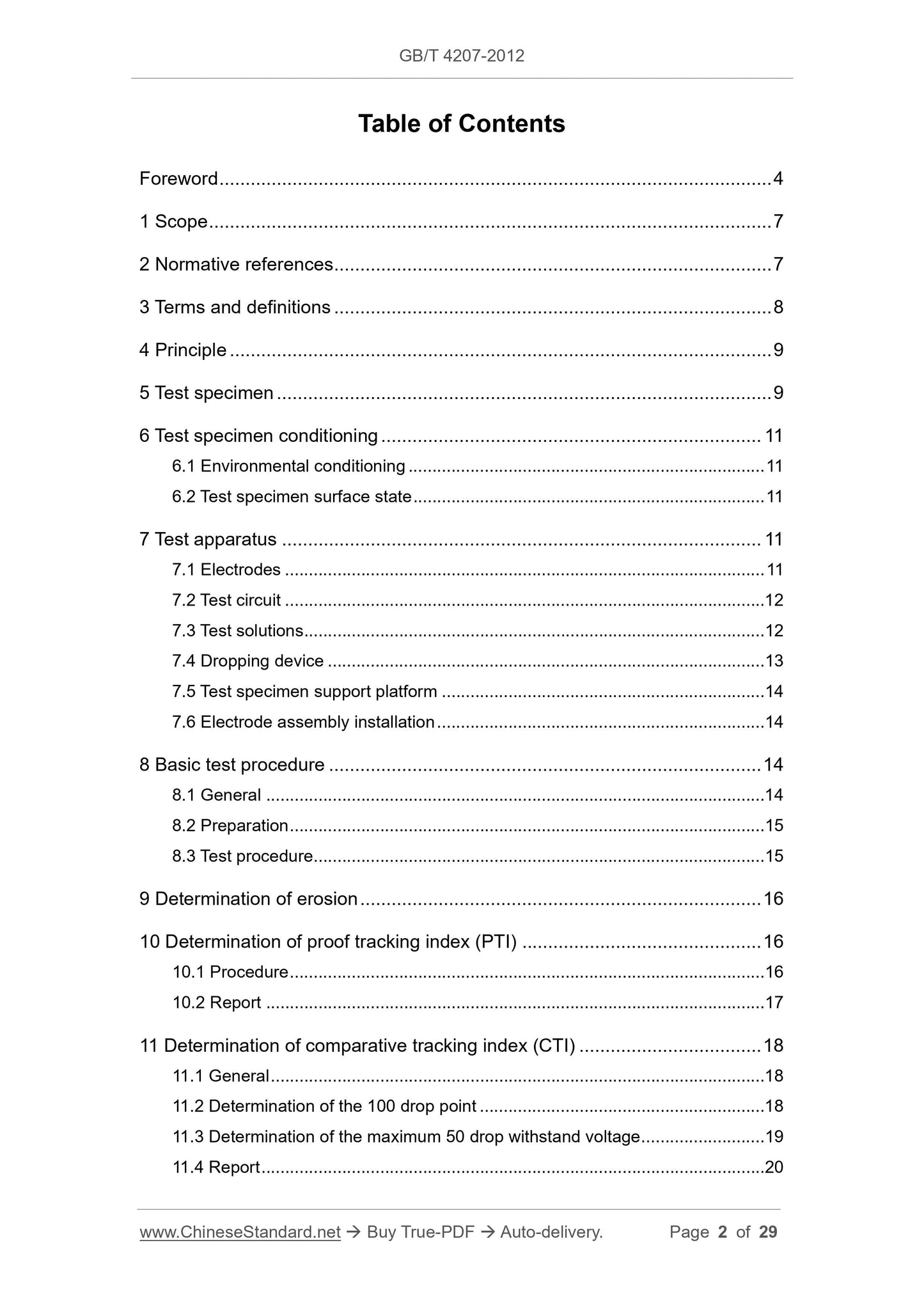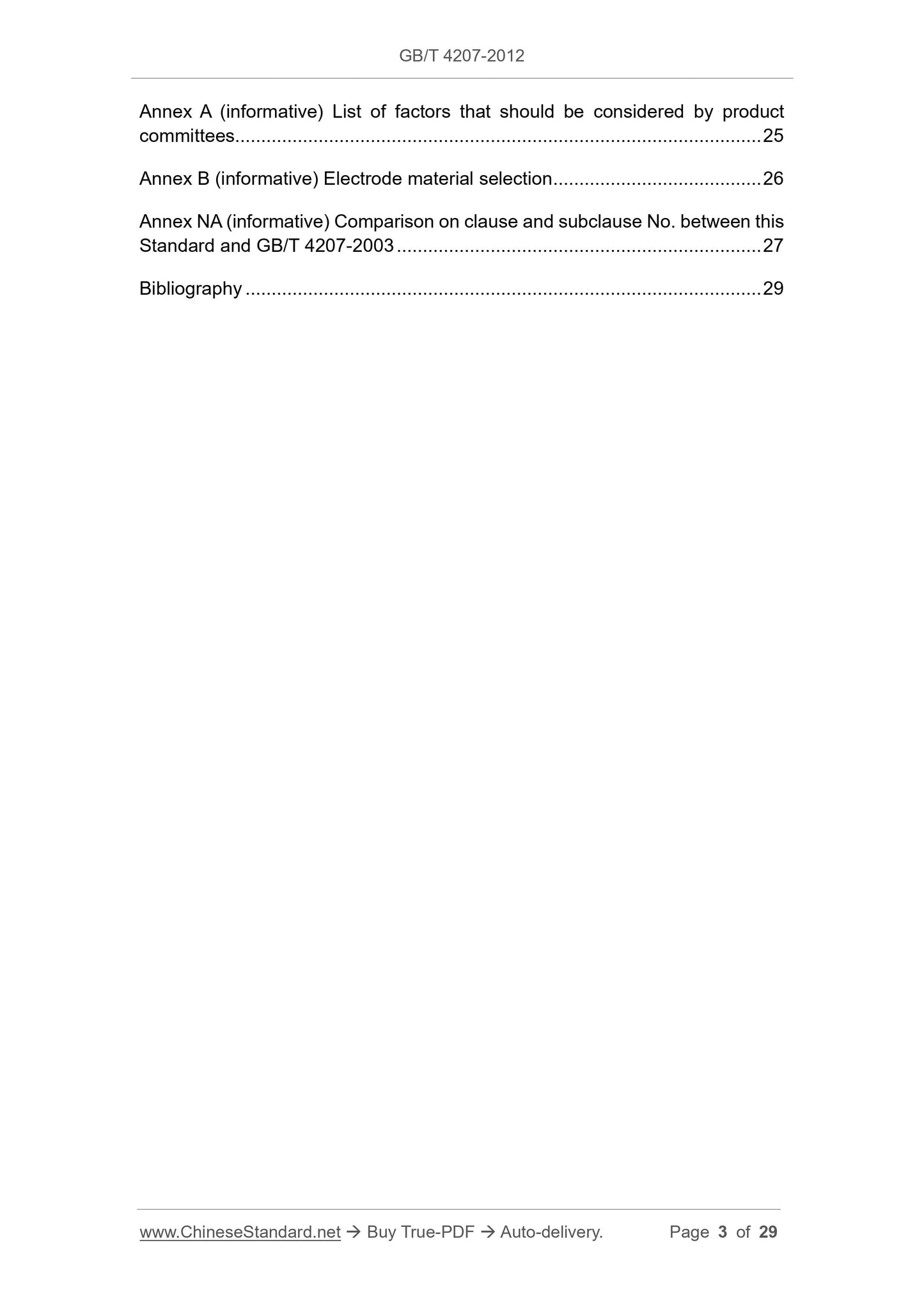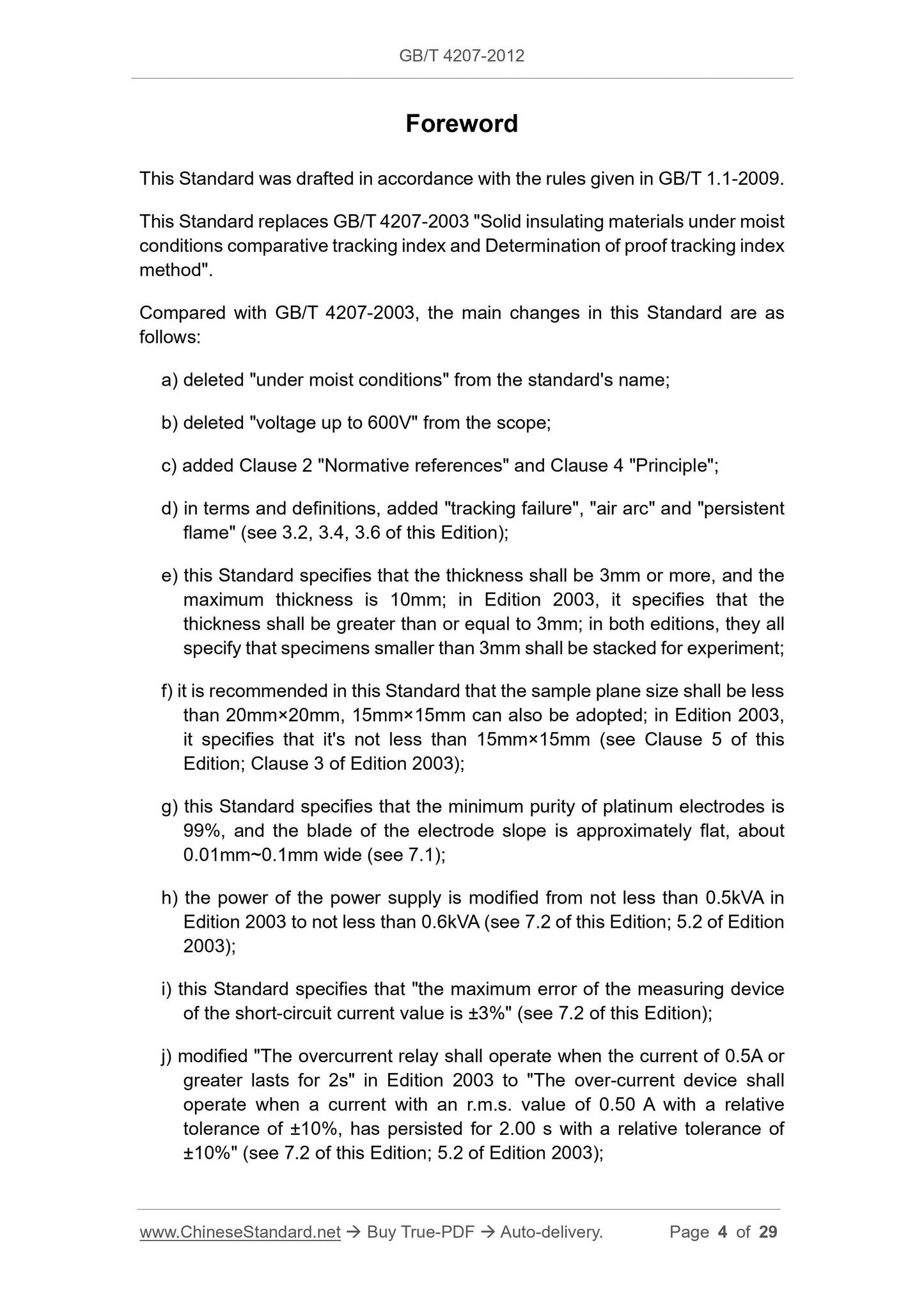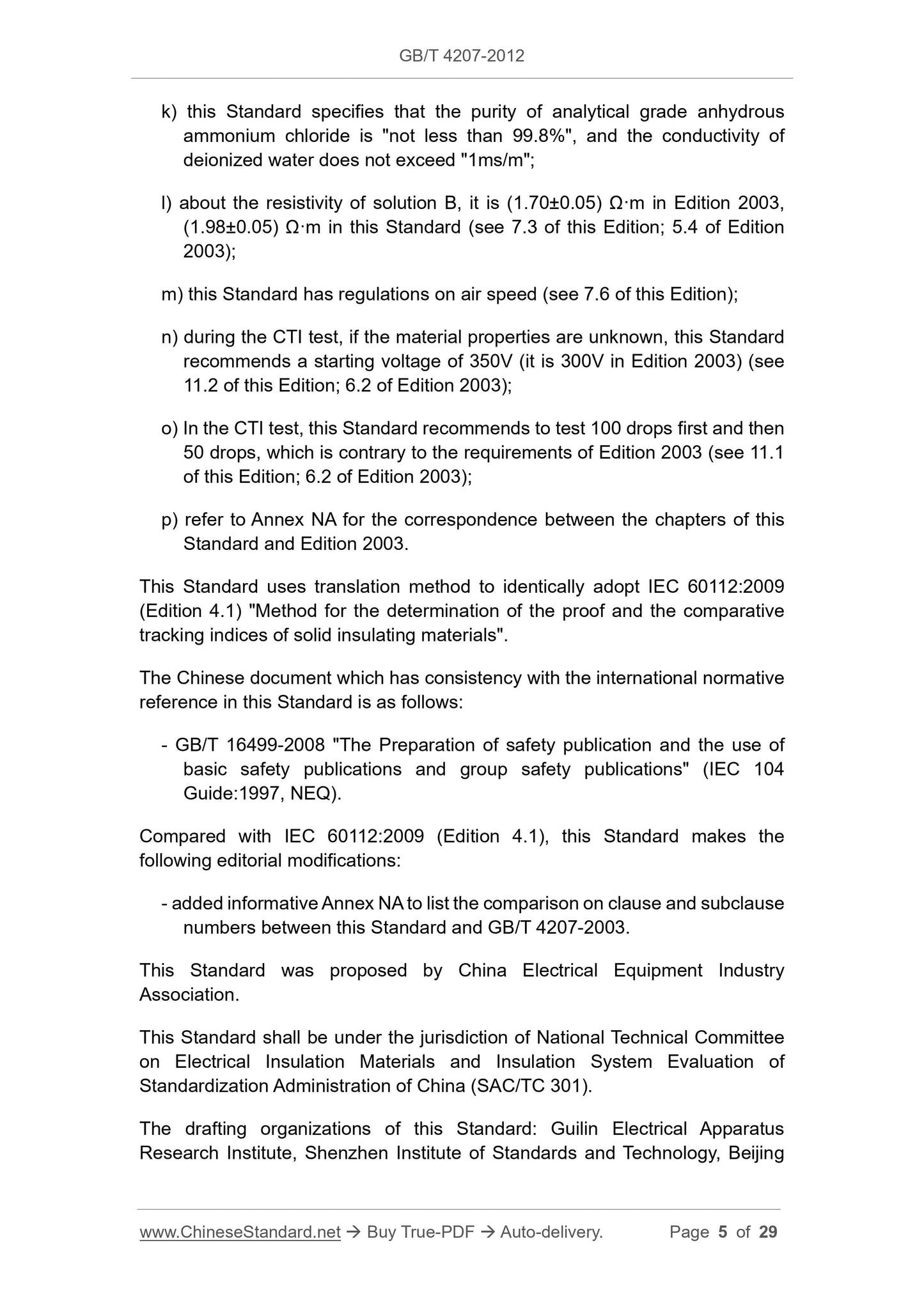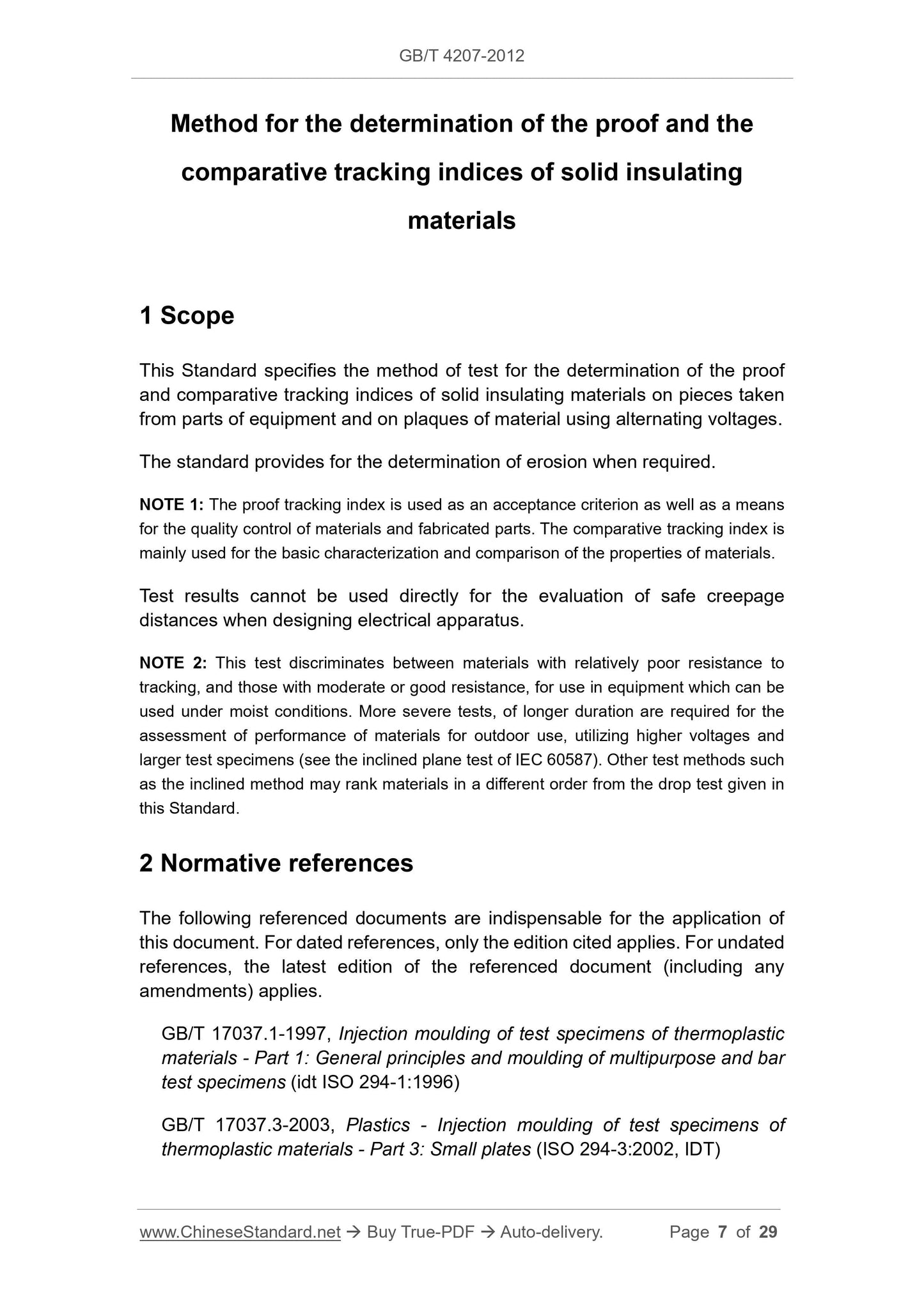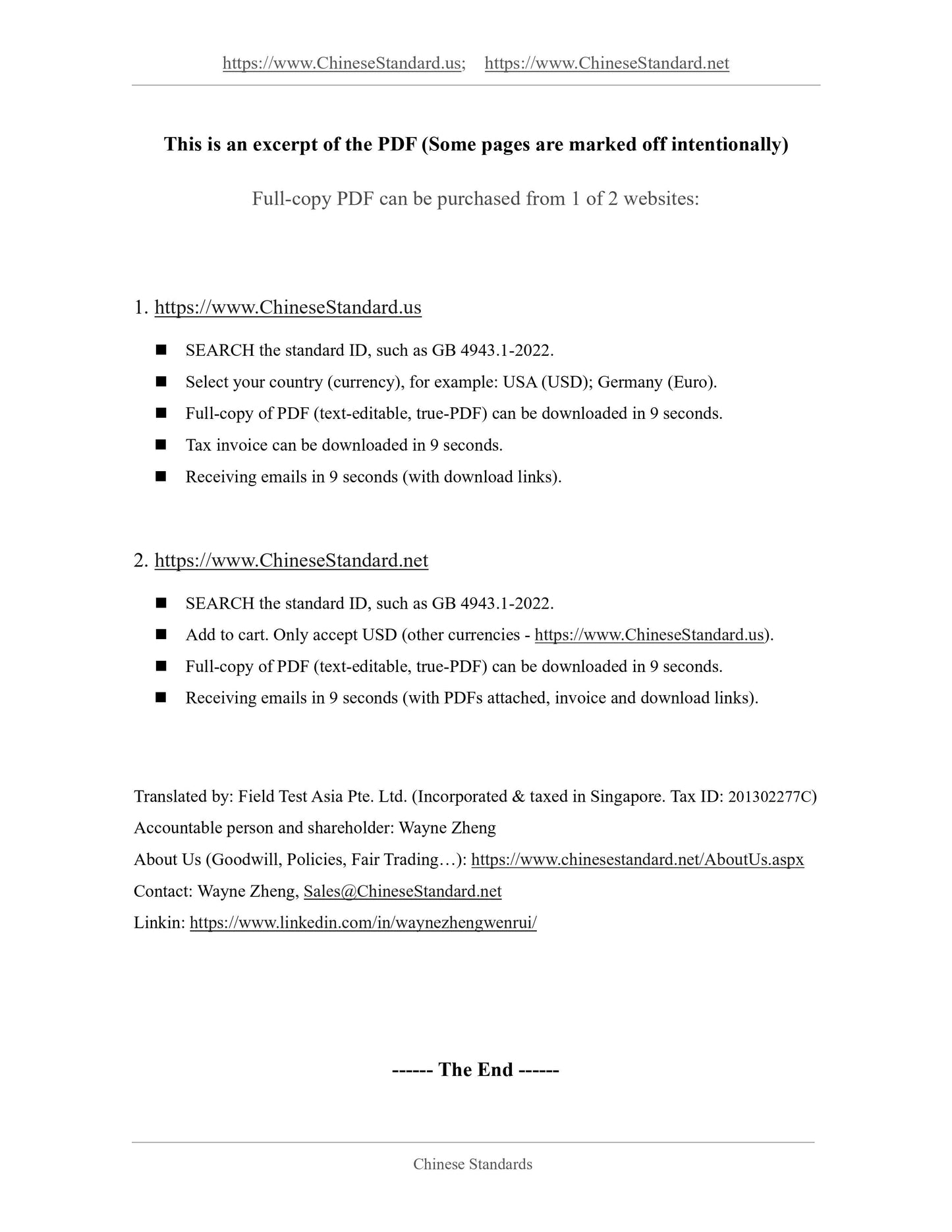1
/
of
7
PayPal, credit cards. Download editable-PDF and invoice in 1 second!
GB/T 4207-2012 English PDF (GB/T4207-2012)
GB/T 4207-2012 English PDF (GB/T4207-2012)
Regular price
$305.00
Regular price
Sale price
$305.00
Unit price
/
per
Shipping calculated at checkout.
Couldn't load pickup availability
GB/T 4207-2012: Method for the determination of the proof and the comparative tracking indices of solid insulating materials
Delivery: 9 seconds. Download (and Email) true-PDF + Invoice.Get Quotation: Click GB/T 4207-2012 (Self-service in 1-minute)
Newer / historical versions: GB/T 4207-2012
Preview True-PDF
Scope
This Standard specifies the method of test for the determination of the proofand comparative tracking indices of solid insulating materials on pieces taken
from parts of equipment and on plaques of material using alternating voltages.
The standard provides for the determination of erosion when required.
NOTE 1: The proof tracking index is used as an acceptance criterion as well as a means
for the quality control of materials and fabricated parts. The comparative tracking index is
mainly used for the basic characterization and comparison of the properties of materials.
Test results cannot be used directly for the evaluation of safe creepage
distances when designing electrical apparatus.
NOTE 2: This test discriminates between materials with relatively poor resistance to
tracking, and those with moderate or good resistance, for use in equipment which can be
used under moist conditions. More severe tests, of longer duration are required for the
assessment of performance of materials for outdoor use, utilizing higher voltages and
larger test specimens (see the inclined plane test of IEC 60587). Other test methods such
as the inclined method may rank materials in a different order from the drop test given in
this Standard.
Basic Data
| Standard ID | GB/T 4207-2012 (GB/T4207-2012) |
| Description (Translated English) | Method for the determination of the proof and the comparative tracking indices of solid insulating materials |
| Sector / Industry | National Standard (Recommended) |
| Classification of Chinese Standard | K15 |
| Classification of International Standard | 29.035.99 |
| Word Count Estimation | 20,263 |
| Older Standard (superseded by this standard) | GB/T 4207-2003 |
| Quoted Standard | GB/T 17037.1-1997; GB/T 17037.3-2003; IEC 104 GUIDE; ISO 293-1986; ISO 295-1991 |
| Adopted Standard | IEC 60112-2009, IDT |
| Regulation (derived from) | National Standards Bulletin No. 41 of 2012 |
| Issuing agency(ies) | General Administration of Quality Supervision, Inspection and Quarantine of the People's Republic of China, Standardization Administration of the People's Republic of China |
| Summary | This standard specifies the solid insulating material resistant to tracking and comparative tracking index measurement method for equipment components and materials used discoid alternating voltage of the occasion. This standard specifies the requirements |
Share
